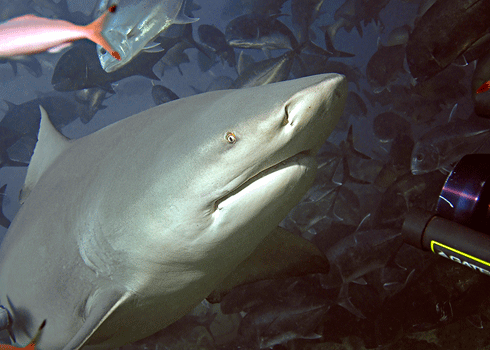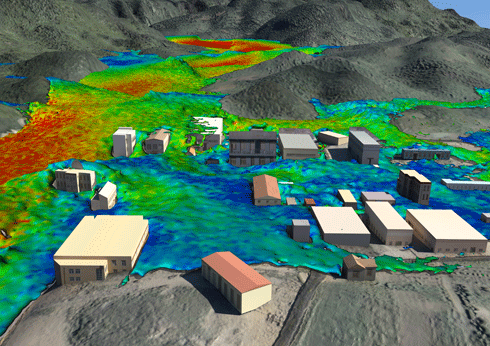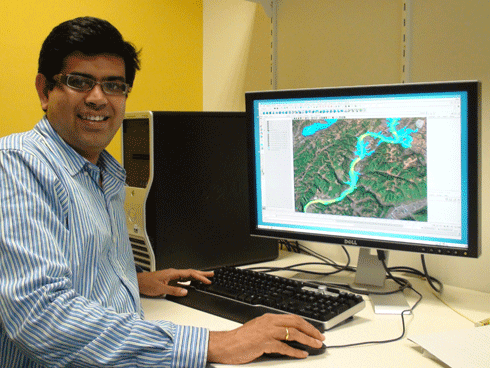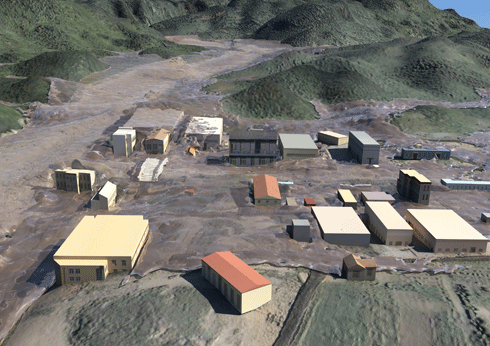
|
Published: 23 April 2012
Fish as friends not food in sharks’ social networks
‘Fish are friends, not food,’ says Bruce the Shark in the movie Finding Nemo, during a group-therapy-style meeting for marine predators. But could sharks and fish really be friends? In a statistical way, they could.

|
|
Researchers are using social network analysis to quantify the level of dependency of sharks on different fish and vice versa.
Credit:
Terry Goss/Marine Photobank
|
CSIRO researcher Dr Grace Chiu and Dr Anton Westveld from the University of Arizona in the US have described how techniques commonly used to study who-tweets-who can be used to understand who-eats-who in the marine food chain. They have published their findings in the journal Proceedings of the National Academy of Sciences (PNAS). 1
‘Most high-school biology students know about food chains,’ says environmental statistician Dr Chiu.
‘They’re a way of illustrating feeding or “trophic” relationships between organisms in an ecosystem. An example might be algae is eaten by fish, fish is eaten by shark. The names are linked by arrows to show the direction and dependencies of the individual species in the relationship.
‘Food webs are a more complex, but more realistic, way of representing these relationships. They may show that a particular species of shark eats, say, five different species of fish and seals, and sometimes the odd shark too.
‘They may also show the seal eats many of the same fish species that its predator, the shark, also eats. Thus, the food web illustrates an intricate network of connections, in the way that people’s social connections could be represented as a network with clusters or nodes around the most connected individuals.’
Dr Chiu recognised that food webs are similar to social networks, as both are represented by nodes and dependencies. She wondered whether the statistical techniques used to study the one could be used for the other. Fellow statistician, Dr Westveld, who specialises in social network modelling, provided the link.
A social network analysis looks at how individual people are connected in social relationships. Market researchers, election campaign planners and other analysts study them to find out who the opinion leaders and key influencers are; how many camps or tribes there are around a particular issue; who leads and who follows; and even who-trades-with-who.
Social network analysis has been around longer than social media tools like Facebook and Twitter. But the advent of these tools in parallel with statistical network models has allowed researchers to more easily gain insight into interactions within relationships.
In this collaboration, Dr Westveld knew how to analyse social networks using statistical modelling. Dr Chiu, on the other hand, saw an opportunity to use the same techniques to analyse food webs. Her idea was to statistically analyse food web structures to learn about feeding activity and preferences.
By working together, the two researchers developed new data analysis tools to achieve Dr Chiu’s objectives. They found they were able to quantify preferences of predators for different prey, and see how likely roles were switched when the predator became prey.
For example, in one of the ecosystems they studied, the statistical model identified that the diving bell spider liked to ‘go to lunch’ with the great diving beetle – the two predators showed significantly similar preferences when it came to food.

|
|
A pair of diving bell spiders: in the analysis, they like to ‘go to lunch’ with great diving beetles.
Credit:
Baupi/Wikimedia Commons
|
At the other end of the spectrum, cannibalism, a regular event in nature, is not part of the current model but could be incorporated if desired, according to Dr Chiu.
The researchers were surprised that their technique worked so well for studying ecosystems – the first time the technique has been used for a scientific application. As Dr Chiu points out, even in classical social network analysis, much of the research is qualitative rather than quantitative.
While the ecosystem case studies in the PNAS paper were well-known ones from the Caribbean, South Africa, UK and US, Dr Chiu says the technique could be applied to Australian and other ecosystems.
Which means in theory that a flounder could ‘friend’ a cod; a lorikeet could ‘link in’ a magpie; and a dingo could ‘follow’ a wallaby!
Listen to Dr Chiu discussing her work here
1 Chiu, GS & AH Westveld (2011). A unifying approach for food webs, phylogeny, social networks, and Statistics, PNAS 108(38), 15881–15886.






